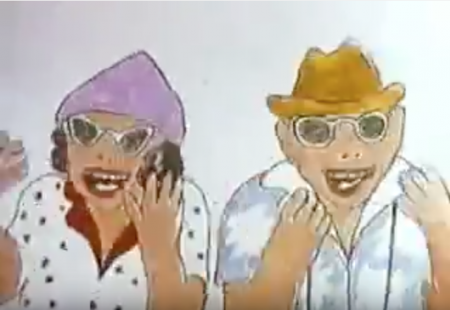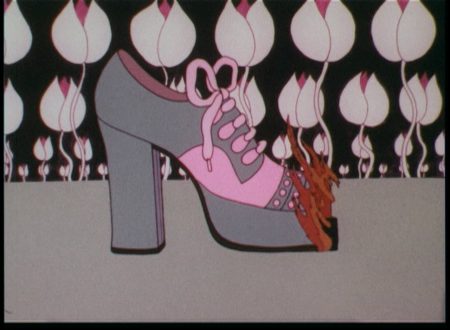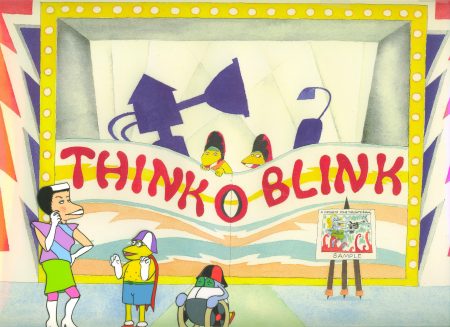This week, we are excited to welcome animator Sally Cruikshank to kick off our fall 2016 season! In preparation, we are excerpting part of an interview with Cruikshank published by Art of the Title. In this interview, Cruikshank looks back over her career with Art of the Title Managing Editor, Lola Landekic.

Lola Landekic: So, maybe before we get into the major film work and the commercials and Sesame Street and the National Film Registry, we can start at the basics. How did you get into animation?
Sally Cruikshank: Well, I was an art major in school at Smith. In my senior year, I taught myself about animation and made a film. A professor helped me set up a photo enlarger and that got me started. I graduated early from Smith and went on to the San Francisco Art Institute because I wanted to get as far away from New England as possible! I made a couple of art films there, just on my own. One was called Fun On Mars, which was sort of my reaction to San Francisco.
That was followed by one called Chow Fun, for which I got a tiny grant from an organization that eventually became South by Southwest, many years later. While I was editing Chow Fun at Snazelle Films — I went in and rented a Moviola to edit it — I got a call that the boss wanted to see me. I finished the editing, and I thought, “Oh man, I must’ve broken the Moviola.” I thought I was in trouble. Instead he said, “I want to hire you to experiment in animation.”
LL: And that’s how you got hired at Snazelle?
SC: Yeah, so Gregg Snazelle hired me and I had this great job where they let me work on my own films. Gregg called it “heading the animation department” but it was just me, so I was just heading myself! He was hiring me to do commercials when we got them, and then the rest of the time to experiment with animation.
They had recently done some great and recognized commercials for Levi’s using rotoscope, one was called The Stranger and it was very well designed, by Chris Blum. Gregg Snazelle won many awards for them. It was done in rotoscope which hadn’t been seen much since the ’40s. They revived rotoscope, really.

So then I did some commercials for them. I believe I did the first commercials for The Gap when it was still just a clothing store in San Francisco, and I did a commercial for Connie Shoes.
I’ve been looking for the rest of those commercials. I used to have them on a 3-quarter inch tape, but that wasn’t a very strong format. They’ve all disintegrated. Formats become obsolete so fast, it’s just stunning. One-inch tape, too. That used to be like the rock solid format for commercials, for broadcasting, but that’s another super fragile format that they can barely save anymore.
We got very few commercial projects, actually, but I had to go to work, 40 hours a week, one hour for lunch, so I got busy and made cartoons.
One thing that was so different is that Gregg didn’t care about owning anything I did. I had signed no contract; there was no, “All of this belongs to me,” which is everywhere now in the business. When my films were finally finished, he still didn’t want to own them! They were my films and I’d made them there. It was a wonderful arrangement.

LL: What was animation like then, in the 1970s? How did the industry seem to you?
SC: The industry was mainly down in Southern California, really. In Northern California we were so out of that. There was so little production going on there. Gregg was doing commercials, but it was more just art. I felt I was an artist experimenting with things. The scene in LA was very male-dominated, and in San Francisco there was very little animation going on…
For more, visit: Sally Cruikshank: A Career Retrospective, Part 1 and Sally Cruikshank: A Career Retrospective, Part 2.